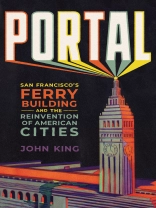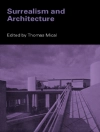A New York Times Book Review Editors’ Choice
“A window to the soul of a great city.” —Inga Saffron, Pulitzer Prize–winning architecture critic
A two-time Pulitzer finalist explores the story of American urban design through San Francisco’s iconic Ferry Building.
Conceived in the Gilded Age, the Ferry Building opened in 1898 as San Francisco’s portal to the world—the terminus of the transcontinental railway and a showcase of civic ambition. In silent films and World’s Fair postcards, nothing said “San Francisco” more than its soaring clocktower.
But as acclaimed architectural critic John King recounts in Portal, the rise of the automobile and double-deck freeways severed the city from its beloved structure and its waterfront—a connection that required generations to restore.
King’s narrative spans the rise and fall and rebirth of the Ferry Building. Rich with feats of engineering and civic imagination, his story introduces colorful figures who fought to preserve the Ferry Building’s character (and the city’s soul)—from architect Arthur Page Brown and legendary columnist Herb Caen to poet Lawrence Ferlinghetti and Senator Dianne Feinstein.
In King’s hands, the saga of the Ferry Building is a microcosm of a larger evolution along the waterfronts of cities everywhere. Portal traces the damage inflicted on historic neighborhoods and working dockyards by cars, highways, and top-down planning and “urban renewal.” But when an earthquake destroyed the Embarcadero Freeway, city residents seized the chance to reclaim their connection to the bay. Transporting readers across 125 years of history, this tour de force explores the tensions impacting urban infrastructure and public spaces, among them tourism, deindustrialization, development, and globalization. Portal culminates with a rich portrait of San Francisco’s vibrant esplanade today, visited by millions, even as sea level rise and earthquakes threaten a landmark that remains as vital as ever.
A book for city lovers and visitors, architecture fans and pedestrians, Portal is essential reading for anyone interested in the history of San Francisco and the future of American cities.
Sobre el autor
John King is San Francisco Chronicle’s former architecture and urban design critic and a two-time Pulitzer finalist. An honorary member of the American Society of Landscape Architects, he lives in Berkeley, California.












